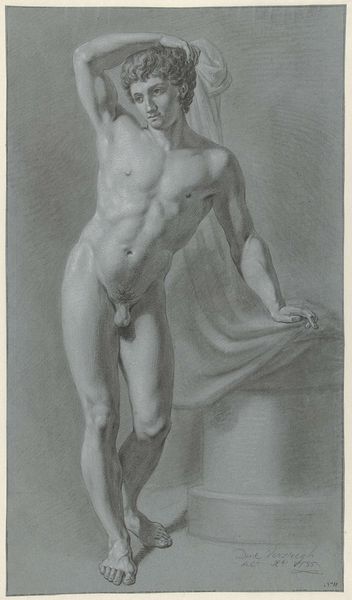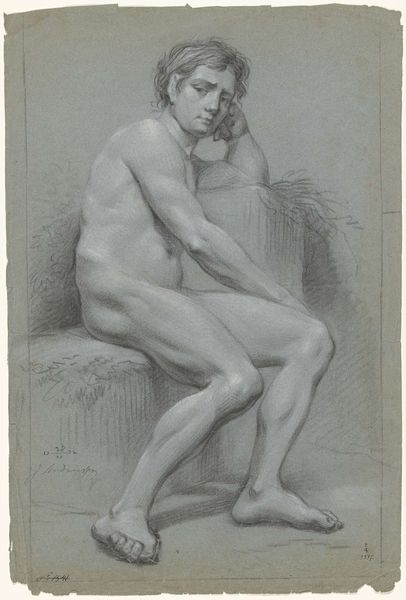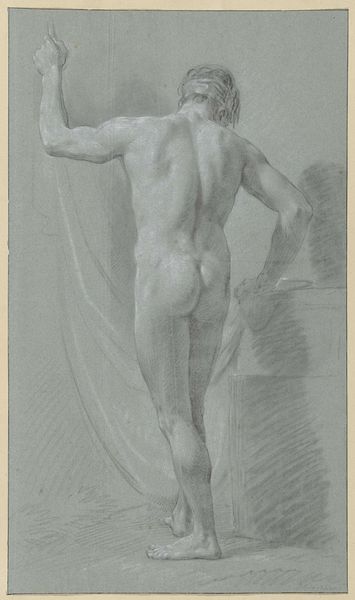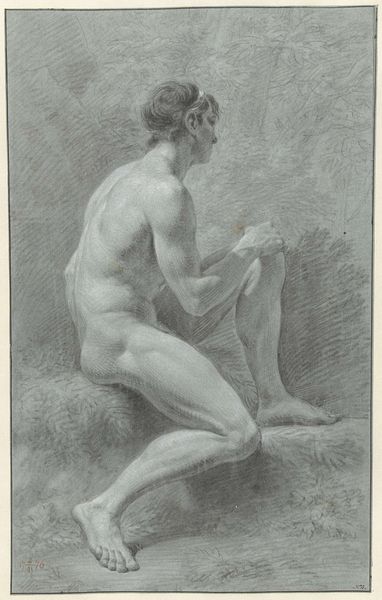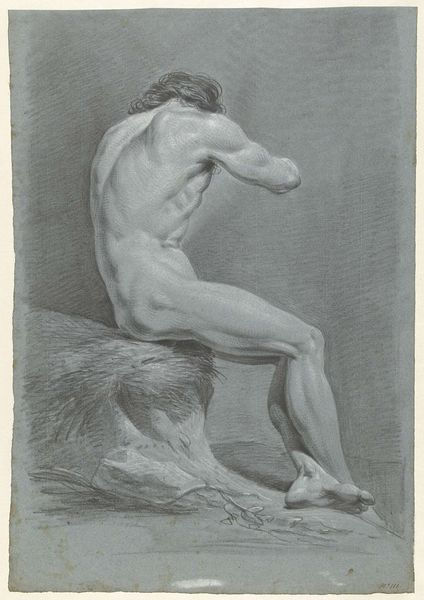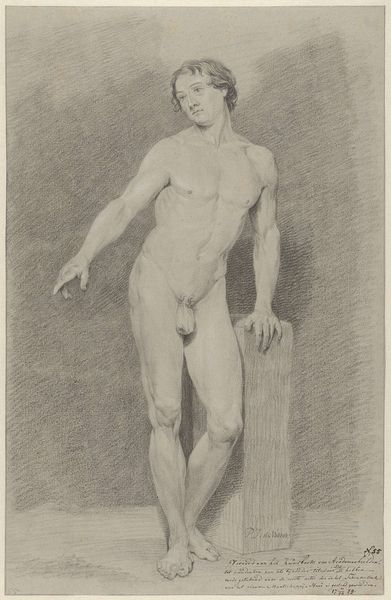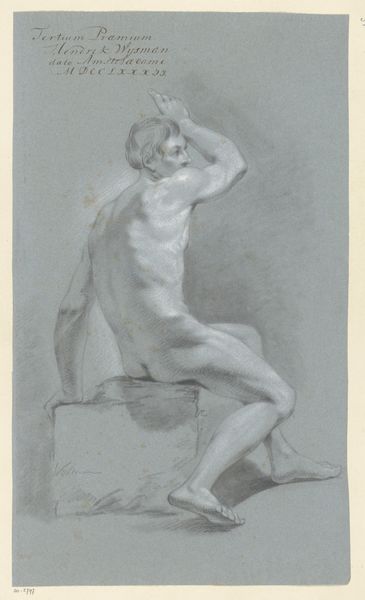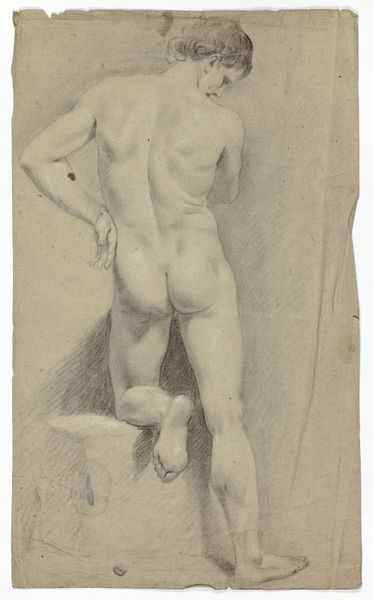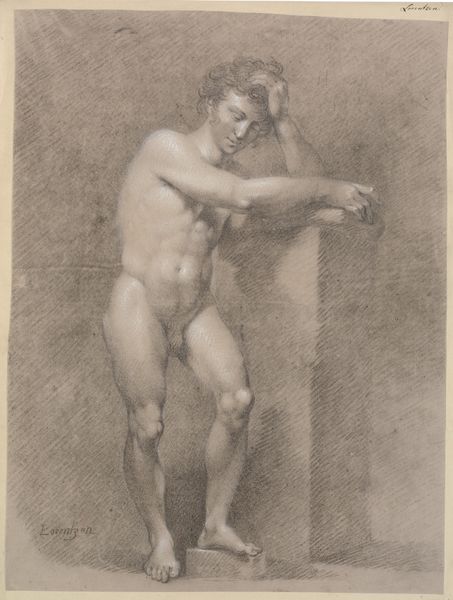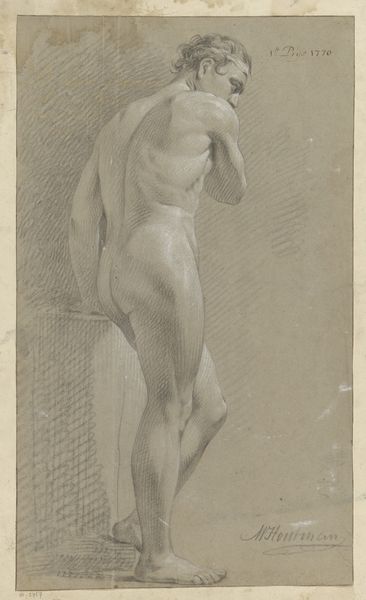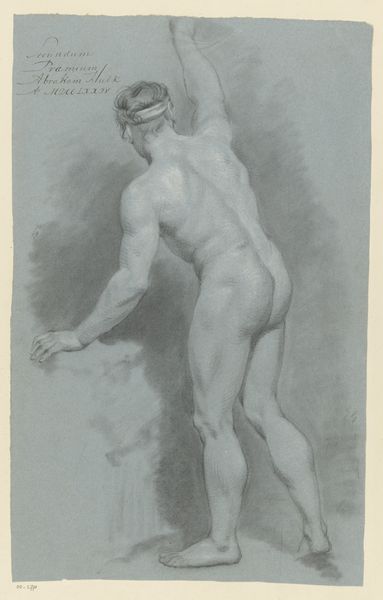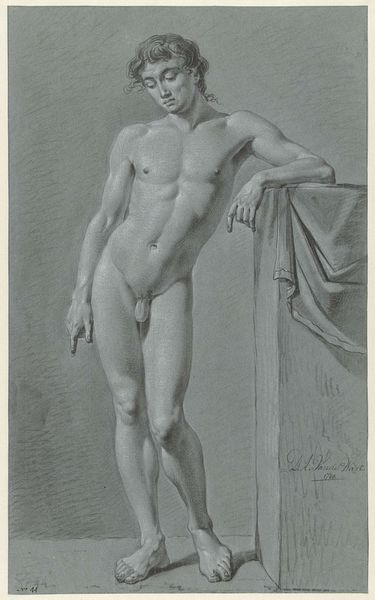
drawing, charcoal
#
portrait
#
drawing
#
neoclacissism
#
charcoal drawing
#
pencil drawing
#
portrait drawing
#
charcoal
#
academic-art
#
nude
#
portrait art
Dimensions: height 516 mm, width 311 mm
Copyright: Rijks Museum: Open Domain
Curator: "Zittend mannelijk naakt, naar rechts, voor een boom"—that's "Seated Male Nude, facing right, before a tree." It’s possibly from 1776, created by Jan Tersteeg. It’s rendered in charcoal and pencil, embodying the Neoclassical style and reflecting a very academic approach to art. What’s your initial take on it? Editor: You know, at first glance, he just looks...uncomfortable. Like he's trying to find the least prickly spot on that tree trunk. It has an almost vulnerable quality, even amidst this clear attempt at idealization. Curator: It's crucial to consider this work within its historical context. The late 18th century saw a renewed interest in classical ideals of beauty and the human form. But the emphasis was often put on the male nude as embodying strength, virtue and citizenship – that can be clearly recognized here. Is there a sense of societal messaging at play? Editor: Oh, definitely! There is a definite attempt to fit the Neoclassical mold— muscled, but in a very deliberate, studied way. Like someone was saying, "Quick, everyone! Look noble! Remember Rome!" but with all the human awkwardness still peeking through the cracks. You almost feel sorry for the poor guy trying to pose as an embodiment of pure virtuous citizenry. Curator: Indeed. Tersteeg’s work navigates the complex terrain between idealized form and individual expression. Considering how the male nude has been historicized through socio-political paradigms, the portrayal almost speaks about performativity within a prescribed role. Editor: Absolutely. The way the light catches on his skin – it feels less about divine perfection and more about flesh and blood. It’s interesting to compare with something that we’d consider nude these days; there is still a boundary that isn’t crossed, yet this piece does stand out due to how raw and less eroticized the artwork has been depicted to its viewers. Curator: Right, the gaze isn't about exploitation, but something more analytical—perhaps pedagogical, in a sense. These works were, in part, about training artists. And looking at the very precise rendering of muscle and bone, one gets the sense that this specific composition seeks to showcase and emphasize skill above all else. Editor: It's amazing how much information this seemingly simple drawing holds within it, how it reflects the anxieties, and the aspirations of a particular moment in time. You can just keep on looking. Curator: I agree completely. The layering of historical and theoretical understanding really expands our appreciation for a single artwork. It prompts a re-evaluation and deeper critical thought about this time frame.
Comments
No comments
Be the first to comment and join the conversation on the ultimate creative platform.
